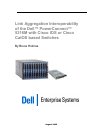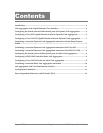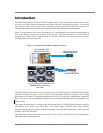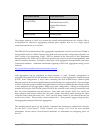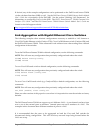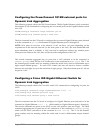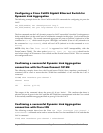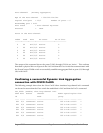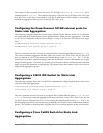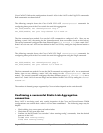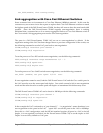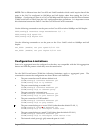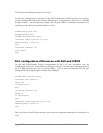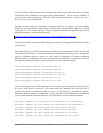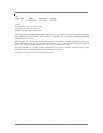
August 2005 Page 9 Dell Enterprise Product Group
The output of the command shows the ports 2/1 through 2/6 Status is ‘connected’ and a
Channel mode of ‘active’. This confirms that there is physical link on all ports in the LAG and
that the Cisco switch has communicated with the PowerConnect 5316M switch to successfully
establish an aggregated link on ports 2/1 through 2/6 with LACP.
Configuring the PowerConnect 5316M external ports for
Static Link Aggregation
The following example shows the PowerConnect 5316M Gigabit Ethernet switch CLI commands
for configuring three external ports of the Gigabit Ethernet switch for static aggregation. Note that
a LAG can be configured with 0-6 ports (example is using 3), a port may only be part of a single
LAG:
5316M(config)# interface range ethernet g13-15
5316M(config-if)# channel-group 1 mode on
The first command sets the CLI mode to configure three external Gigabit Ethernet ports (g13-15).
The second command aggregates the three ports into a static LAG. Static LAGs do not use LACP
and are defined in the CLI by setting the channel-group mode to ‘mode on’. The ‘1’ for the
channel-group number only has meaning within the switch and is used to differentiate up to eight
unique channel-groups. For each LAG created, you will need to choose a number between one and
eight, for up to the maximum of eight groups. The internal ports that connect to the servers do not
support link aggregation groups.
Configuring a CISCO IOS Switch for Static Link
Aggregation
The following example shows the Cisco IOS CLI commands for configuring three ports of the Cisco
switch for static link aggregation.
3750(config)# interface range GigabitEthernet 1/0/9 - 11
3750(config-if)# channel-group 1 mode on
The first command sets the CLI mode to configure three Gigabit Ethernet ports (1/0/9 through
1/0/11). The second command aggregates the three ports into a static LAG. Static LAGs do not
use LACP and are defined in the Cisco CLI by setting the channel-group mode to ‘on’. The ‘1’ for
the channel-group number only has meaning within the switch and is used to differentiate channel-
groups. The number of channel-groups supported by Cisco switches depends on the switch model.
Configuring a Cisco CatOS Switch for Static Link
Aggregation



